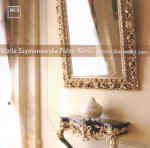Maria Szymanowska (1789-1831) was the first Polish pianist to achieve European fame and was a highly regarded performer in her day. Composer/pianists like Field and Hummel dedicated pieces to her, while Szymanowska’s younger compatriot Chopin counted among her admirers. She also composed 113 pieces, including numerous piano works encompassing many of the genres that later would be identified with Chopin (Mazurkas, Preludes, Waltzes, Polonaises, Nocturnes, and Etudes). Indeed, throughout the 20 works selected for this recital, we encounter figurations and patterns that might be considered “Chopin in embryo”.
The attractive B-flat Nocturne that opens the disc contains decorative bel canto-inspired twists and turns that are similar to those in Chopin’s Nocturnes. By contrast, the lyrical A-flat Nocturne at times evokes Schubert’s better-known Impromptu in the same key (D. 935 No. 2). Among the Preludes, I’m most taken with the D major for its astonishing, off-the-wall modulations (imagine Schubert rewriting Chopin’s G-sharp minor Prelude, edited by Alkan, and you’ll get the idea). By contrast, larger works such as the Caprice sur la Joconde and the Fantasie are stuffed with improvisatory padding and tend to ramble. They demand a pianist who can invest the inspired sections with character, elegance, and flair while downplaying the boring parts. However, in Anna Ciborowska’s hands, everything sounds the same, and that generally holds true for the smaller works as well.
The eight Mazurkas, for instance, are too evenly phrased and rhythmically flattened out to even suggest an inkling of the music’s rustic kick. The two Polonaises lack requisite pomp and swagger. Ciborowska’s gingerly approach to the G minor Prelude’s difficult thirds that jump between registers hardly achieves the composer’s Agitato directive, and her gentle way with the E major Prelude turns this little whirlwind of a piece into easy listening. Ciborowska seems more comfortable in slower, lyrical works like the aforementioned Nocturnes, where her tasteful rubatos and harmonic pointing make a lovely impression. I’d recommend the disc as a means to get to know this interesting, relatively unknown repertoire while awaiting a more imaginative pianist to take up Szymanowska’s cause.
































